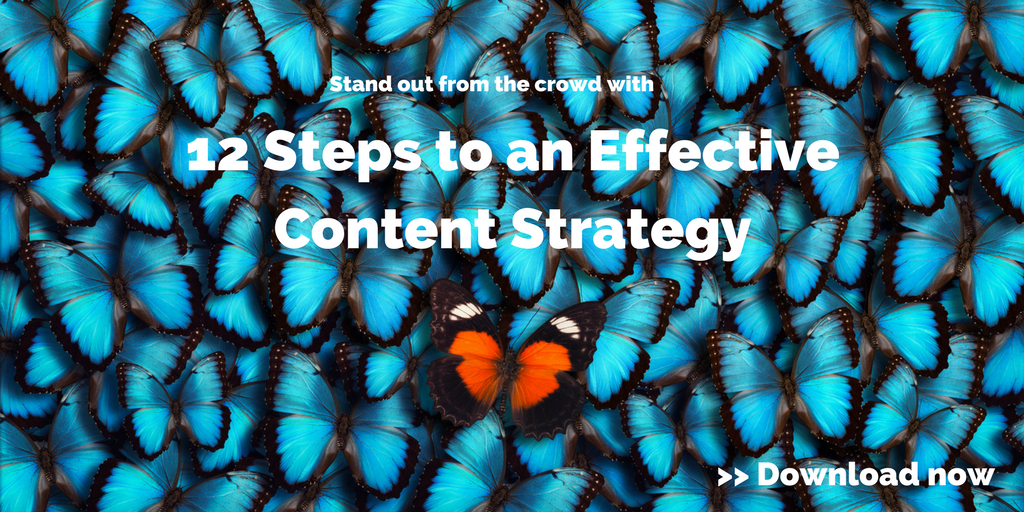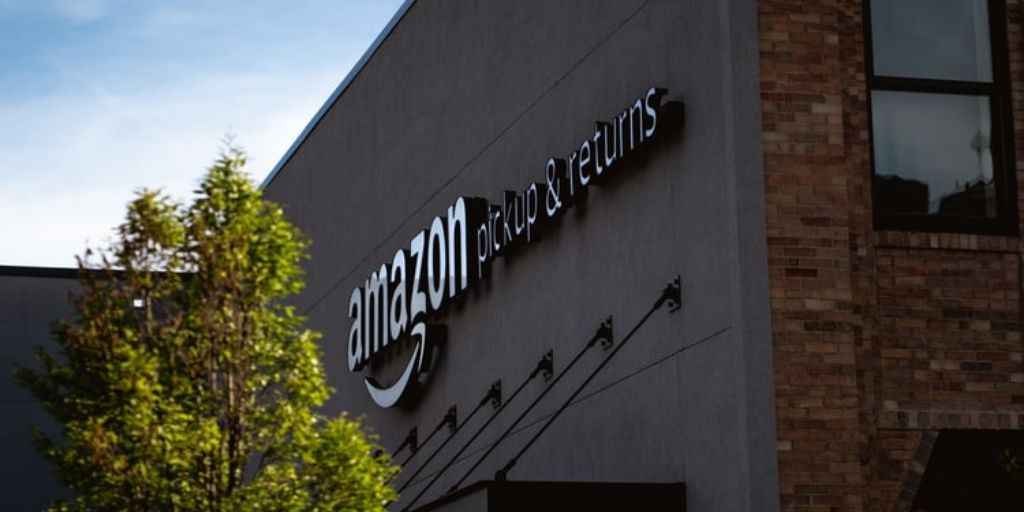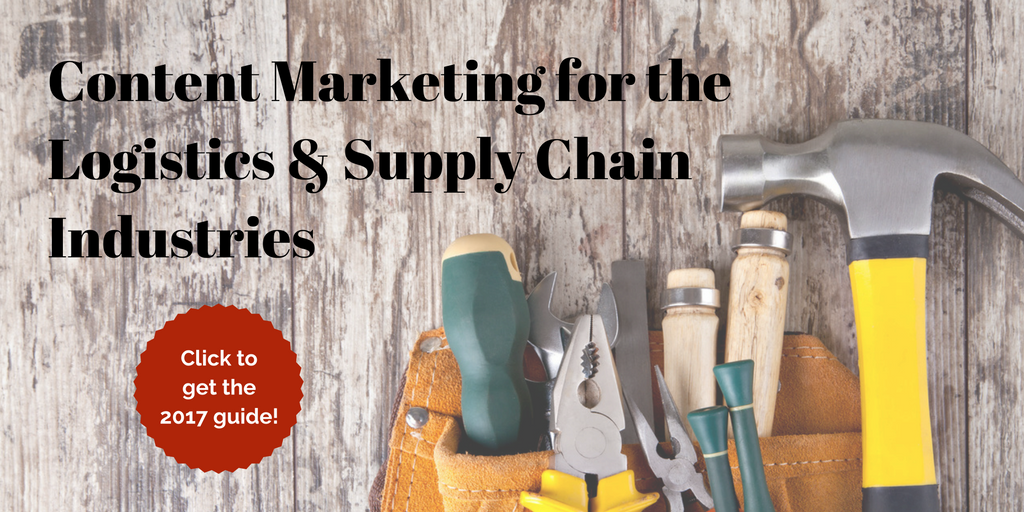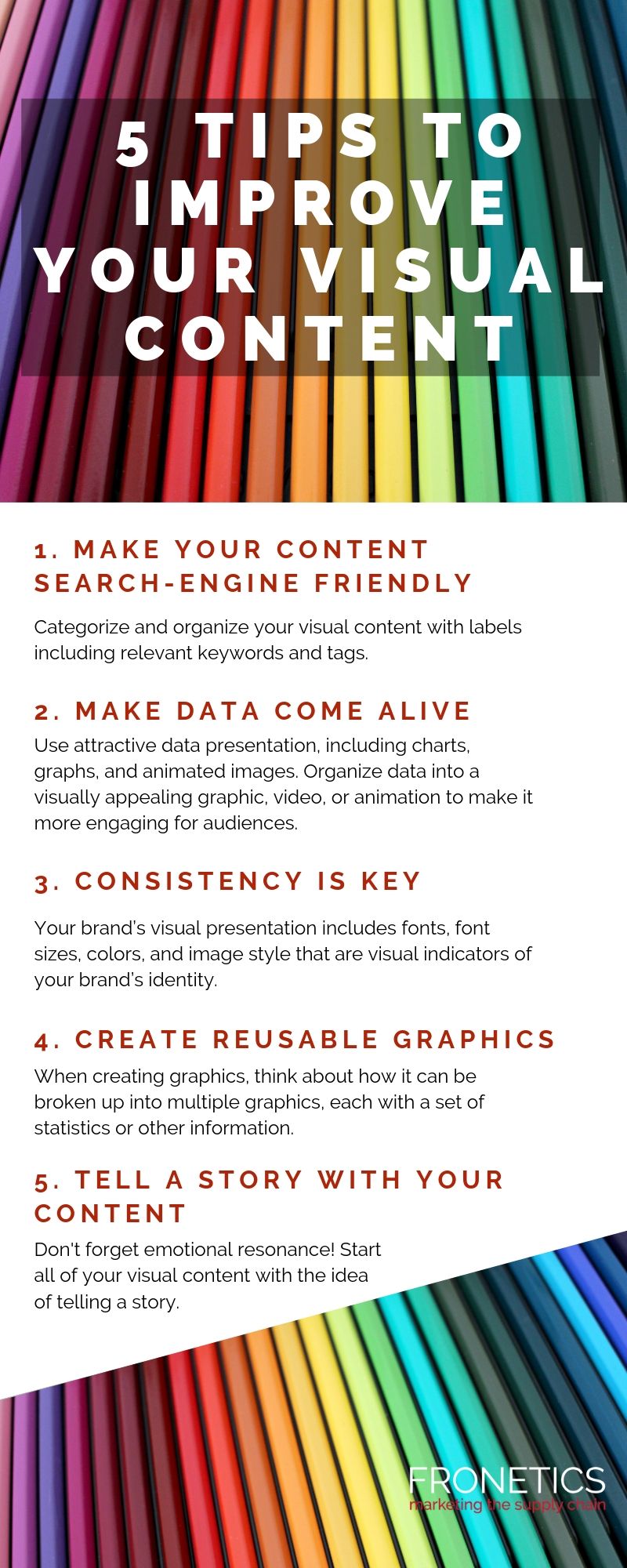
by Fronetics | Sep 19, 2019 | Blog, Data/Analytics, Marketing, Marketing Automation, Supply Chain
In a highly competitive B2B landscape, AI can be the strategic advantage your brand needs. Here’s everything you need to know about AI for marketing.
Highlights:
- AI enables predictive analysis – the ability to look at a large set of data and predict what steps to take to reach a desired outcome.
- Social listening powered by AI gives marketers key insights into brand perception and audience reaction.
- When considering purchasing an AI technology for marketing, consider if it includes its own Big Data source.
When we think about artificial intelligence (AI), it’s often with a twinge of unease. Whether it’s pop culture telling us that robots will take over at their earliest opportunity, or fears of human labor being replaced with machines, AI is a complex, controversial, and even mysterious topic. But when it comes to the applications of AI for marketing, there’s actually a lot to celebrate.
It’s important for marketers not only to have a thorough understanding of the uses of AI for marketing, but to be aware of industry trends, and how to determine investment to maximize ROI.
What is AI for marketing?
While it’s not necessary for marketers to be artificial intelligence and robotics experts, it’s beneficial to have a functional understanding of the technology that enables AI for marketing. In a general sense, the term “AI” refers to the area of computer science that enables the creation of software and machines that possess what we think of as intelligence. That is, they are able to work, react, and learn without being specifically programmed for each task.
AI is enabled by data science, “the practice of organizing and analyzing massive amounts of data.” When it comes to marketing, AI can be thought of as an extension and development of marketing automation. Essentially, AI for marketing is software that collects, analyzes, and reacts to large amounts of data, with increasing levels of sophistication.
According to content intelligence expert Bart Frischknecht, of Vennli, AI for marketing can be categorized in one of two ways.
- Recommending: This type of marketing software “predicts which action will have the most positive outcome in order to recommend a next step in a series of events.” Frischknecht describes these recommendations as “stepping stones on the way to fully automating a given task.”
- Automating: Software that automates is a furtherance of software that recommends. For a task to be automated, it needs to be “routine and repeatable, the goal needs to be specific, and the steps to achieve that goal must follow an exact set of rules.”
Think of data as the fuel that powers AI for marketing. As we gather more and more data, and devise increasingly sophisticated analytical methods, the possibilities for intelligent automation in marketing will continue to expand.
5 examples of AI for marketing
1) Data filtering and analysis
At Fronetics, we’ve advocated for a data-driven approach to marketing since our founding. For marketers, data is the most powerful strategic weapon in your arsenal, and AI is sharpening it even further. AI software can consolidate large amounts of data, and analyze it to determine patterns and trends.
2) Social listening
Social listening, also known as social monitoring, is the process of observing and examining social media, to identify and access what is being said about your brand. Social listening gives marketers valuable market intelligence, prospect insight, tone awareness, and competitive advantage.
Current AI software lets marketers not only engage in sophisticated social monitoring, but it also enables “sentiment analysis,” automatically generating a report of the overall attitude of your audience and perception of your brand.
3) Predictive analysis
Beyond simply filtering and analyzing data, AI for marketing goes a crucial step further: predictive analysis, the practice of applying the information extracted from data sets to predict a future outcome or trend.
This revolutionary capability of AI can be used to analyze buyer purchase behavior, for example, and determine when and how to distribute certain types of content. Social media scheduling tools, for instance, use predictive analysis to suggest the optimal times to share content.
4) Audience targeting and segmentation
As B2B buyers increasingly come to expect personalization at all stages of the buyer’s journey, it can be a challenge for marketers to deliver. However, AI makes personalization possible at a large scale, drawing on data to segment and categorize audiences.
The limits of the specificity of this segmentation are determined only by the amount of data available. In other words, the more data, the more the AI software can instantly segment a contact list and deliver personalized correspondence.
5) Chatbots
One of the most ubiquitous examples of AI for marketing, chatbots are computer programs that simulate human conversation using auditory or textual methods. Chatbots communicate with buyers within a messaging app, like Facebook messenger.
3 questions to ask when considering an investment in AI for marketing
While the possibilities of AI for marketing are virtually endless, the reality for most companies is that marketing budgets are not. When considering an investment in any technology, including AI, maximizing ROI should be top of mind. Frischknecht suggests that marketers ask the following three questions when considering an investment in AI for marketing:
- Which marketing task will this technology automate, and will doing so alleviate a significant burden for marketing staff?
- Does purchase of the tech include its own Big Data source, or do I need to provide all the data? If the latter, do I have adequate data, and can I connect my data source to the tech?
- What evidence exists of the tech making good recommendations or automating one of my tasks.
AI is revolutionizing marketing. Investing intelligently in these technologies can provide critical market insights, data processing capabilities, and predictive analysis.
Related posts:


by Fronetics | Sep 17, 2019 | Big Data, Blog, Data/Analytics, Internet of Things, Robotics & Automation, Supply Chain
Machine learning is shaping the future of supply chain and logistics management, improving accuracy, speed, scale, and more. Here’s how.
Highlights:
- Machine learning refers to an application of artificial intelligence that lets systems learn and improve automatically based on experience.
- Experts predict that 95% of supply chain planning vendors will rely on supervised and unsupervised machine learning for their solutions by 2020.
- When paired with the Internet of Things, machine learning can provide cost savings around $6 million per year.
When it comes to the future of the supply chain, machine learning is one of the most exciting applications of artificial intelligence (AI) technology out there today. Machine learning is a mode of data analysis that provides systems with the ability to learn and improve automatically from experience, without being specifically programmed.
Gartner recently projected that by 2020, 95% of supply chain planning vendors will rely on supervised and unsupervised machine learning for their solutions. Furthermore, it isn’t just expert predictions that demonstrate the impact and potential of machine learning for the supply chain. Amazon, for example, is using machine learning to improve accuracy, speed, and scale for its Kiva robotics, and DHL relies on machine learning to power its Predictive Network Management system.
So, what is it about machine learning that makes it ideally suited to meet the challenges commonly faced by supply chain companies? The answer lies in the fact that machine learning algorithms are brilliant at detecting patterns, anomalies, and predictive insights. This makes it the ideal technology to help supply chain companies forecast error rates, reduce costs, improve demand planning productivity, and increase on-time shipments.
Here’s how these remarkable technologies are already revolutionizing supply chain management.
7 ways machine learning is improving supply chain management
1) Logistic solutions
Particularly when it comes to resource scheduling systems, machine learning algorithms are driving the next generation of logistics technologies. An April 2019 report from McKinsey predicts that “machine learning’s most significant contributions will be in providing supply chain operators with more significant insights into how supply chain performance can be improved, anticipating anomalies in logistics costs and performance before they occur.”
2) Internet of Things
The Internet of Things (IoT)’s sensors, intelligent transport systems, and traffic data generate a tremendous variation in data sets. Machine learning has the potential to deliver increased value by analyzing these data sets, thereby optimizing logistics and ensuring that materials arrive timely.
Additionally, machine learning can reduce logistics costs by uncovering patterns in track-and-trace data captured through IoT-enabled sensors. A December 2018 study by Boston Consulting Group determined that pairing machine learning (specifically Blockchain) with the IoT can contribute to cost savings of $6 million per year.
3) Preventing privileged credential abuse
A recent article in Forbes points to privileged credential abuse as “the leading cause of security breaches across global supply chains.” Machine learning can prevent these abuses by verifying the identity of anyone requesting access, as well as the context of the request and, most importantly, the risk associated with the access environment.
4) Reducing fraud potential
In addition to reducing risk and improving product and process quality, machine learning can reduce the potential for fraud in the supply chain. For example, machine learning startup Inspectorio is a solution to the problems “that a lack of inspection and supply chain visibility creates, focusing on how they can solve them immediately for brands and retailers.” Their algorithm provides insights that instantaneously reduce the risk of fraud.
5) Reducing forecast errors
According to a recent report from Digital/McKinsey, “Lost sales due to products not being available are being reduced up to 65% through the use of machine learning-based planning and optimization techniques.” The same report observes that “inventory reductions of 20 to 50% are being achieved today when machine learning-based supply chain management systems are used.”
6) Detecting inconsistent supplier quality levels
Machine learning can help manufacturers combat one of the biggest problems they face today, namely a lack of consistent quality and delivery performance from suppliers. These technologies can quickly detect and address errors, as well as determine highest and lowest performing suppliers.
7) Preventative maintenance
Preventative maintenance is a tremendous strategic asset for the supply chain. And, when paired with machine learning, it “allows for better prediction and avoidance of machine failure by combining data from the advanced IoT sensors and maintenance logs as well as external sources,” according to the same Digital/McKinsey study mentioned above. Not only that, “asset productivity increases of up to 20% are possible, and overall maintenance costs may be reduced by up to 10%.”
The bottom line: machine learning is reinventing supply chain management
Not only has machine learning already realized tremendous value for the supply chain, but the very nature of this technology means that the possibilities are virtually endless. Algorithms continue to become more sophisticated, and, as new challenges arise, machine learning grows and evolves to meet them.
Related posts:


by Fronetics | Sep 5, 2019 | Blog, Logistics, Marketing, Social Media, Supply Chain
Instagram Stories offers paid advertising delivering targeted content to B2B buyers and building brand awareness with potential customers.
Highlights:
- As the number of people using stories has grown, so has the number of businesses using the format to connect with their audiences on social media.
- As more people browse Stories, you can show your ad to the maximum number of people possible using this format.
- You can get more eyes on your video content by posting videos on Instagram Stories.
Video transcript:
I’m Elizabeth Hines from Fronetics and today’s topic is paid advertisements on Instagram Stories.
Instagram Stories are the latest social media trend. As the number of people using stories has grown, so has the number of businesses using the format to connect with their audiences on social media.
Story ads represent an alternative to News Feed ads, which, though still effective, had lost a bit of novelty. Here are 3 reasons to start using Instagram Story ads:
1) Brand reach: As more people browse Stories, you can show your ad to the maximum number of people possible using this format.
2) Traffic and conversions: Send more people to your website, where they can convert to a lead.
3) Video views: Stories are a great platform for video. You can get more eyes on your video content by using it in this channel.
The rise in popularity of Instagram Story Ads tells an interesting, ahem…story. People are interacting more and more meaningfully with brands on their mobile devices and they increasingly want to do so in a format that is easy, convenient, and engaging.
If you want help setting up your Instagram Ads, visit us at fronetics.com to learn more.
Related posts:


by Fronetics | Sep 3, 2019 | Blog, Current Events, Logistics, Supply Chain
The long-rumored launch of an Amazon logistics service is unlikely to be rumor much longer. Here’s what 3PLs need to know.
Highlights:
- Amazon recently invited select shippers to use a service called Amazon Shipping.
- The retail giant boasts a global logistics footprint that covers 243.5 million square feet – and counting.
- Amazon’s hiring plans offer insights into its plans for logistics services.
Rumors of an Amazon logistics service have been swirling for nearly two years. In February 2018, the Wall Street Journal predicted that Amazon was planning to launch a “delivery service that would vie with FedEx, UPS.”
In April of this year, Amazon re-stoked discussion of its long-rumored logistics service by inviting select shippers in three major U.S. cities to use a service called Amazon Shipping. While more recent reports indicate that this Amazon logistics service may not be attractive to all shippers, it’s time to consider the possibility that Amazon is about to become a player in the logistics sector.
The growth of Amazon Logistics
Shortly before the April 2019 reports surfaced, Amstrong & Associates Inc., a logistics industry research and consulting firm, published a detailed report on Amazon Logistics. Summing up the report’s conclusions, A&A President Evan Armstrong said, “Amazon is acting increasingly like a 3PL.”
Armstrong’s report estimates that Amazon provides logistics services for 12% of B2C shipments worldwide, noting that third-party sellers account for more than half of all units sold through the Amazon platform. Eytan Buchman, vice president of marketing at Freightos, points to Amazon’s massive logistics footprint at 243.5 million square feet.
The network of warehouses and distribution centers that make up Amazon Logistics comprises 386 facilities in the U.S. alone. That includes 159 fulfillment centers, 47 inbound and outbound sortation hubs, 52 Prime Now hubs, and 115 local delivery stations, according to data compiled by Montreal-based research firm MWPVL International.
Amazon CEO Jeff Bezos has often emphasized the importance of “how fast [a product] will ship or be available for pickup,” as in his 2017 letter to shareholders. As evidence of Amazon’s focus on logistics, Buchman points to the company’s 2018 competition assessment, identifying “companies that provide fulfillment and logistics services for themselves” as competition.
Yet experts remain divided when it comes to labeling Amazon outright as a 3PL. Armstrong, for example, doesn’t place Amazon in the same category as 3PLs because logistics “is just part of their business.” On the other hand, Satish Jindel of SJ Consulting Group estimates that Amazon generated $42.5 billion in gross revenue from logistics services worldwide in 2018, making it the world’s leading 3PL.
Hiring plans for Amazon Logistics
In doing a deep dive into the nearly 17,700 full-time vacancies listed on Amazon’s website, Buchman formed some interesting insights into Amazon’s plans. Here are the key points he found:
- 920 (or 5%) of the 17,700 jobs listed are in the logistics and transportation sector.
- About half of these logistics and transportation jobs are in the U.S.
- More than half of the vacancies require at least 4 years’ experience.
- More than 10% require at least 7 years’ experience.
- 14 jobs require more than 10 years’ experience.
Based on his analysis, Buchman believes that it’s “clear exactly where the company is moving – cross-border trade and international logistics, while improving courier delivery.”
What does Amazon Logistics mean for the sector?
The Amazon effect is the subject of much discussion, speculation, and anxiety for manufacturers and distributors, and Amazon Logistics is no exception. Other 3PLs, such as FedEx, have publicly insisted that Amazon poses no threat – despite statements to the contrary from Wall Street analysts.
In contemplating where Amazon logistics leaves other 3PLs, Buchman concludes that while “few operate at the same scope as Amazon’s level of business… most do already have the expertise, physical networks, and internal technological capabilities to differentiate.” He concludes on the relatively gloomy note: “Doubling down on improving user experience had recently become the way to stay ahead. But now, it’s looking like the way not to fall behind.”
At Fronetics, we’ve written before about the challenges that the Amazon effect poses for supply chain and logistics companies – and why it’s ultimately a net positive. Amazon’s disruptions to the sector are likely to continue, and, as they do, the rest of the industry has the opportunity to refine and sharpen its practices.
Related posts:


by Fronetics | Aug 29, 2019 | Blog, Content Marketing, Current Events, Logistics, Marketing, Social Media, Supply Chain
Also this month in social media news: Facebook adds Instagram scheduling to Creator Studio and Twitter launches 6-second video ad bidding.
Highlights:
- Facebook is adding an easy option for users to create a still-image slideshow in its Stories feature.
- LinkedIn’s new audience engagement insights will offer improved audience discovery, content recommendations, and industry benchmarking.
- Marketers can now use Facebook’s Creator Studio app to schedule posts on Instagram.
After a somewhat tumultuous July in the world of social media news, August has been calmer. Our updates this month are less concerned with reproaches of Facebook from the Fed and more with news that directly impacts marketers, particularly in the B2B sector. LinkedIn has partnered with third-party providers to offer a robust set of audience engagement insights, and Instagram made the welcome announcement that posts can now be scheduled the Facebook Creator Studio App.
As Stories’ popularity continues to grow, particularly on Instagram, Facebook is working diligently to make its native Stories feature an attractive place for users to post. As part of an ongoing series of updates, this month the social media giant rolled out two new Stories features geared to boost usage. Keep reading for more details on the social media news this month.
Facebook Announces Continued Updates to Stories
As the popularity of Instagram Stories continues to grow, Facebook remains tenacious in trying to encourage usage of its Stories feature. This month, the social network began testing a Stories update prompt displaying a split panel, encouraging users to share to their personal as well as business Page Stories.
Earlier in the month, Facebook added a slideshow option to Stories. The feature allows users to add a still image slideshow to their Story, providing a simplified way to add a stream of images that play out through Story frames. While it was previously possible to achieve the same result by selecting images one by one for each frame, the new option will make it easier.
Facebook believes that Stories are the future of social sharing. While reports indicate that Stories usage is growing, it remains to be seen whether the social media giant can position itself as the preferred platform for Stories content.
LinkedIn Adds New Audience Insights
As part of ongoing efforts by LinkedIn to develop more insight into central topics of interest among its users, the platform has rolled out a new expansion of its marketing partner program with new engagement insights. Responding to the challenge of “reaching and engaging the right audiences at scale,” LinkedIn is partnering with multiple third-party providers to offer a robust set of audience engagement insights.
According to the announcement from LinkedIn, “With these insights, you can better refine your content strategy and make smarter marketing decisions to help deliver better ROI for your LinkedIn ad campaigns and organic posts.” Benefits include audience discovery, content recommendations, and industry benchmarking.
LinkedIn has long been a preferred platform for B2B marketing, and this latest announcement strengthens the network’s credentials.
Facebook Adds Instagram Scheduling to Creator Studio
The latest addition to Facebook’s Creator Studio app is a welcome one for social media marketers. Earlier this month, users began to receive in-app notifications saying, “Instagram and IGTV publishing now available.” Since Instagram scheduling has proven a challenge for social media marketers, this update promises an improved experience.
The new option to schedule Instagram and IGTV posts through Creator Studio offers increased capacity, and it allows marketers to upload to Instagram from a desktop, rather than only through a mobile device. Needless to say, the new publishing and scheduling option will make Instagram marketing far easier. However, it remains to be seen whether posts coming through this process will receive less engagement, a concern in the past with third-party scheduling tools.
Twitter Launches 6-Second Video Ad Bidding
Twitter is launching a new video ad option, namely, 6-second video ad bidding. The ad bidding option means that advertisers will only be charged if their video ad is viewed for 6 seconds. According to the network, “With mobile video consumption at an all-time high, studies show brand impact happens almost instantaneously (within seconds) with video ads.”
Twitter cited the results of a study by EyeSee, which “determined short-form (under 6 seconds) sound-off videos with clear branding drive significantly better ad recall and message association on mobile than linear TVC style videos.” Advertisers will be able to publish on-platform video ads as in the past, but the new option means they can choose only to be charged when a video is viewed for 6 seconds.
Stay tuned for next month’s social media news.
Related posts:


by Fronetics | Aug 7, 2019 | Blog, Content Marketing, Logistics, Marketing, Supply Chain
As digital natives flood the purchasing landscape, visual presentation is critical. Our infographic offers tips to improve your visual content to resonate with today’s buyers.
Highlights:
- Visual content can be more easily digestible and compelling than purely text-based content.
- Optimize your visual content for search engines by accompanying it with searchable text and tags.
- Keep branding consistent with a unified color scheme and fonts.
The internet is becoming an increasingly visual space, and brands are feeling the pressure to stand out from the masses. But making an effort to improve your visual content doesn’t have to be an arduous chore. In fact, the type of complex information that supply chain marketers often need to present can be far more easily digestible in graphic format.
Strategically created and distributed content that is design-minded and visually appealing is your brand’s best friend. Our infographic offers 5 ideas to improve your visual content efforts, with a focus on broadening your brand’s reach, engaging your audience, and generating leads.
5 tips to improve your visual content

(Made with Canva)
1) Make your content search-engine friendly.
In the same way that social media analytics are struggling to keep up in an increasingly visual climate, search engines have yet to be effective at searching visual content. No matter how compelling your visual content, you won’t be getting the most out of your efforts unless you optimize your content for search engines.
There’s a simple solution to make sure your visual content makes it to the top of relevant search queries: post a text transcript with video or accompanying explanatory text with infographics and images. You can also make sure your visual content is easily searchable by categorizing and organizing it. Label visual assets like logos and images with relevant keywords, and tag them when publishing.
2) Make data come alive.
When it comes to presenting the kind of turgid data that’s often inherent in supply chain purchasing, visual formats are a marketer’s best friend. Supply chain marketers are ideally positioned to make use of attractive data presentation, including charts, graphs, and animated images. Organizing data into a visually appealing graphic, video, or animation makes it far more engaging and digestible for your audience.
3) Create reusable graphics.
Whether you’re creating visual content in house or outsourcing visual content creation, it behooves you to consider how it can be reused. When designing an infographic, for example, think about how it can be broken up into multiple graphics, each with a set of statistics or other information. You can combine these smaller graphics to other pieces of text content, adding visual appeal and boosting engagement.
These visual snippets are also ideal for posting on social media as teasers to link to fuller visual assets.
4) Consistency is key.
One of the most important things you can do to improve your visual content is make sure it’s consistent. Your brand’s visual presentation includes fonts, font sizes, colors, image styles, and any other graphic elements that are visual indicators of your brand’s identity.
Make sure all content creators in your organization receive clearly documented visual guidelines, along with samples for their use. Every time you publish visual content, include checking these guidelines as part of your editorial process.
5) Tell a story with your content.
The difference between good visual content and great visual content ultimately boils down to one thing: emotional resonance. The most significant way you can improve your visual content is to start with the idea of telling a story.
Ideally, you’re presenting data in a way that communicates a feeling and elicits an emotional response from the viewer. If your data is impactful, your viewers will forge an emotional connection with your brand.
What tips do you have to improve your visual content?
Related posts:













